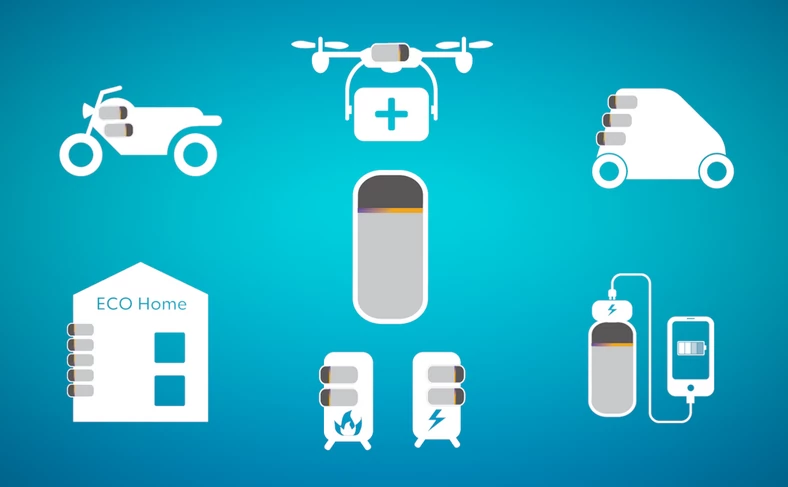Toyota and its subsidiary Woven Planet Holdings have created a prototype of a portable hydrogen container that can be treated as a power bank.
The Toyota hydrogen canister or cartridge is 40 cm long and 18 cm in diameter, with a target weight of 5 kg. Compact dimensions and various capacities are provided that allow for convenient transport, exchange and recharging.
The hydrogen cartridge is enough for 3-4 hours of electricity production
Engineers calculate that the tank will hold enough hydrogen for a typical fuel cell module to generate enough electricity to run a domestic microwave oven for 3-4 hours. Hydrogen cartridges are to be used in the event of power outages (natural disasters) while travelling or in areas without a transmission network.
Toyota tests hydrogen cartridges in the city of Woven City
Toyota and Woven Planet have partnered with Japanese energy producer ENEOS and are working together to build a comprehensive hydrogen supply chain. In this way, they intend to accelerate and simplify its production, transport and everyday use. During the testing phase of hydrogen cartridges, companies will focus on meeting the energy needs of the residents of Woven City (an eco-city built by Toyota in Shizuoka Prefecture) and surrounding communities.
Replace the hydrogen container in the car and generate electricity
Engineers will check how portable hydrogen tubes work in vehicles or household appliances. The originators assume, for example, that three or more interchangeable tanks can be a source of power for fuel cells that produce electricity to drive electric cars (FCEV cars, such as the Toyota Mirai).

The tanks themselves will also be developed to make them more capacious, efficient and easy to use. The Japanese emphasize that the ultimate goal of the project is to propose a solution that will facilitate the achievement of climate neutrality so that everyone has access to clean energy, first in Japan and then around the world.
Will hydrogen be produced ecologically?
Today, most hydrogen is produced from fossil fuels and used for industrial purposes such as fertilizer production and oil refining. Hydrogen technology and related infrastructure must meet appropriate safety standards and be adapted to new conditions to use this gas as an energy source at home and in everyday life. The Japanese believe that in the future, hydrogen production will be mainly switched to emission-free methods based on renewable energy, and the scope of its use will cover all major sectors of the economy, including transport and energy.
